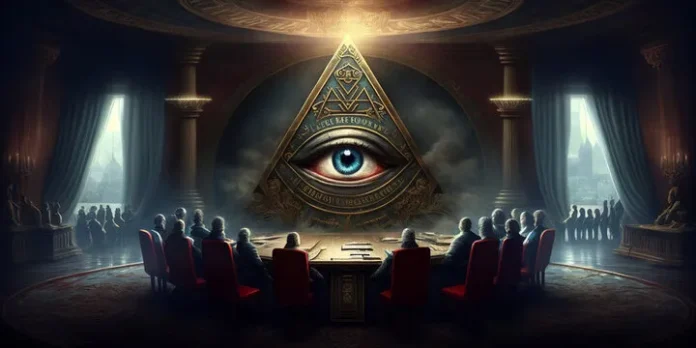Table of Contents
1. Introduction
The enigmatic entity known as the Illuminati, a clandestine society, has captivated countless minds with its air of mystery. Operating surreptitiously behind the scenes, this powerful group has been depicted and explored in a plethora of media formats, ranging from literature, films, and television shows to comics, video games, and music videos.
In this article, we delve into the historical narrative, objectives, and influence of the Illuminati, while also debunking myths and affirming facts about this covert association.
Additionally, we unveil a significant secret about the resurgence of the Illuminati, shedding light on its goal to expand its reach and influence.

The concept of the Illuminati has long intrigued individuals seeking to unravel clandestine networks wielding power behind the curtains of society. In the realm of speculation, the term “Illuminati” has transcended its historical origins, becoming a symbol of secrecy, influence, and enigmatic authority. It embodies the notion of a covert elite, purportedly pulling strings across politics, economics, and culture.
Its mention evokes a mysterious force shaping the world’s trajectory, fostering theories that range from plausible socio-political control to far-fetched, fantastical conspiracies.
The mere invocation of “Illuminati” in discourse triggers contemplation on hidden structures and the extent of their sway, fueling curiosity about obscured forces guiding human destinies in ways beyond conventional comprehension.
2. Illuminati roots
In the twilight of the 18th century, the world witnessed the birth of the Illuminati. The brainchild of Adam Weishaupt, a German philosopher and jurist, this secret consortium was started on May 1, 1776. To kindle the fire of Enlightenment principles while resisting the clutches of religious and political tyranny. Drawing on the insight of eminent thinkers such as Voltaire and Rousseau, Weishaupt had an unshakable belief: the crucible of knowledge and scientific activity was an antidote to the dominance of bigotry and folklore.
The name “Illuminati” comes from the Latin epithet “Illuminatus” which means “enlightened”. Symbolic of Weishaupt’s great endeavor, the name symbolized a lighthouse whose purpose was to lift the shroud of ignorance and destroy the tyrannical edifices that have ensnared humanity in obscurity.
In its infancy, Illuminati operations were characterized by secrecy. Weishaupt, with great surgical precision, attracted the spirits of his relatives and friends and intermingled his visions with them. This composed staff, in the form of a fusion of scholars, scientists, and experts in various fields, such as jurisprudence, medicine, and art, united under the banner of “Ishrajgaran”. They were watered down by their loyalty to the teachings of the Enlightenment. They were kindred spirits inevitably determined to disrupt the established order.
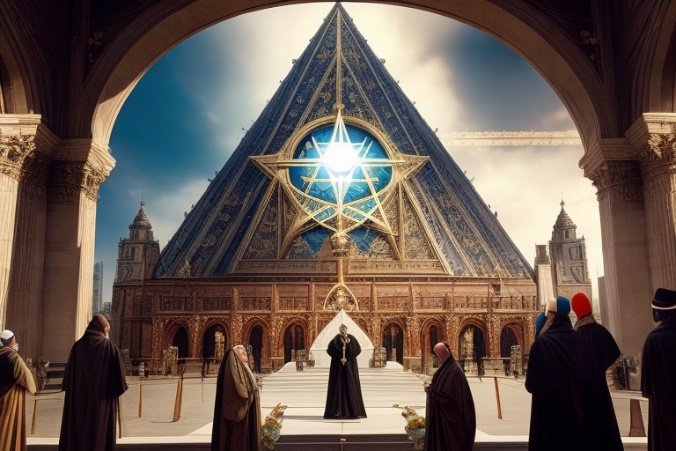
As the ivy of the Illuminati moved forward, weaving a vast tapestry, conservative strongholds were being targeted. Instead, they too, sensing an insidious force threatening their dominance, began whisperings of sinister Illuminati-related conspiracies. Johann Joachim Christoph, a prominent Freemason with unwavering loyalty to the spirit of the Enlightenment, played an important role in strengthening the footprint of this consortium. Using his extensive network and organizational acumen, he pointed out kindred spirits and planted the seeds of Illuminati meetings in countless lands.
However, piercing the veil of sensationalism reveals their true nature: crusaders defending the precepts of the Enlightenment, challenging authoritarian shadows. They may have been fleeting, but their reverberations reverberate through the annals of history and the eternal quest for knowledge.
3. Illuminati goals
The goals of the Illuminati were defined in a certain framework: increasing knowledge, combating superstitions, reducing religious influence, and opposing the monarchy.
3.1 . Increase knowledge
In the Age of Enlightenment, knowledge emerged as a transformative and liberating force. Illuminati believed that a person can be freed from the chains of ignorance and mental darkness by increasing his knowledge and awareness. Therefore, they put a lot of emphasis on learning and critical thinking and considered the acquisition of this knowledge to be a key element in human success.
3.2. Dealing with superstitions
The Illuminati believed in explaining facts through logical reasoning and scientific evidence. They saw superstitions as an obstacle to progress and tried to move people away from these irrational beliefs.
3.3. Reducing religious influence
The Illuminati’s belief was that religion should not be involved in society and politics. They believed that religious institutions may use religion as a tool to maintain their power. Therefore, they considered it important to promote freedom of thought and opinion.
3.4. Opposition to the monarchy
In the framework of the theories followed by the Illuminati, the monarchy was seen as a power-oriented and hereditary system. They sought a society in which power is democratically distributed and everyone has an equal opportunity to participate in decision-making.
4. Influence in popular culture
The Illuminati has become a popular subject in various forms of media, often portrayed as a powerful and secretive group controlling world events. Novels like Dan Brown’s Angels and Demons and movies like The Da Vinci Code have contributed to the intrigue surrounding this mysterious society.

Television shows such as “The X-Files” and “Fringe” also incorporate Illuminati themes, exploring the idea of hidden agendas and secret organizations manipulating the world. Additionally, video games and music videos often feature Illuminati symbols, fueling the fascination with this secret society. 1. New world order
One of the most contentious issues linked to the Illuminati is the notion of a “New World Order”. It places the Illuminati, in collaboration with other influential entities, in the role of architects for a global governance system tailored to their goals. Though there’s likely instances of formidable associations striving for influence, the idea of a pervasive conspiracy commanding every facet of society seems implausible.
5. Separating fact from fiction
Conspiracy theories have always fascinated the human imagination, and one of the most enduring ones is the existence of the Illuminati. This secret society is believed to control world events, manipulate governments, and communicate through hidden symbols and codes. However, when we critically evaluate the sources of information and separate fact from fiction, it becomes clear that the claims surrounding the Illuminati are notably lacking in concrete evidence and proper planning.
Despite its popularity, there is no credible evidence to support the existence of the Illuminati as a powerful secret society. Many claims are based on vague connections and biased interpretations of historical events. Analytical reports from reliable sources completely refute these claims and make them look fake.
One such report is an analysis by the Conspiracy Research Center. They carefully examined the alleged communication secrets of the Illuminati and concluded that there was no concrete evidence to prove their existence. The report emphasizes that symbols and codes attributed to the Illuminati are often misinterpreted or taken out of context.
Additionally, a comprehensive study by the International Institute of Secret Societies analyzed historical records and archives to trace the origins of the Illuminati. They found no substantial evidence linking the alleged secret society to major world events or government manipulation. The study concluded that the Illuminati conspiracy is the product of imaginative minds rather than real evidence.
Another important aspect to consider is the lack of coherent planning and organization within the alleged Illuminati network. Conspiracy theories often portray the Illuminati as a highly organized and influential group, but the reality is far from that. The lack of concrete plans or documented strategies undermines the credibility of these claims.
It is very important to approach conspiracy theories with a critical mindset and evaluate the credibility of the sources. Many conspiracy theories, including the Illuminati, thrive on sentimentality and fear. By relying on reliable analytical reports and experts’ opinions, you can separate reality from fantasy and achieve a clearer understanding of the truth.

First of all, it is important to understand that Freemasons and the Illuminati are not the same. Masons, also known as Freemasons, are a fraternal organization that dates back centuries. They are known for their rituals, symbols and charitable works. On the other hand, Illuminati refers to various historical groups that claimed to have special knowledge or enlightenment.
Conspiracy theories surrounding these organizations are often the result of misunderstanding and misinformation. It is easy for people to fall into the trap of believing elaborate and far-fetched explanations for social events instead of accepting the complexities of reality.
A fundamental point in the arguments that stay critical of these often concealed communal structures or so-called “secret societies,” remains their supposed engagement in promulgating mythologies and advancing conspiratory narratives that are less tethered to the collective realm of established science and concrete facts. Regardless of how prevalent or held in conviction, such indictments often vastly miss one pivotal requirement – the much needed and undeniable affirmations or irrefutable facts that solely prop up these noteworthy yet ambiguous assertions about the societies.
From a ten thousand foot perspective, this predicament acts as a telling reminder of how imperative it stands to keep our analytical heads on and fervently remember one key fact-chasing rule in or examination – just because two things have dotted lines that link one to the other under certain circumstances, it doesn’t essentially ordain a immutable connection that one invoked the other. In other words, correlating two given entities or instances doesn’t axiomatically ratify a causation among them, where one induces the other to happen or change.
Delving a bit into the intricacies of these societies, one might point out the uncanny temporal or logical parallels between specific events or developments and operatons instigated by these covert organizations. This factor tends to pave the way towards hypotheses that include such societies being orchestrators or crime lords of the aforementioned unraveled events.
Nevertheless, what on surface seems like cause-effect relationship, might just disintegrate into mere rebellion of assumption once prodded with probes of concrete proof. Hence, a shrewd observer needs to appreciate that these occurrences being amorphous in nature might be simply due to the factor of coincidence. A chance alignment, a behavior which in itself doesn’t provide concrete evidence that the entities running these societies bear sole liability for the contentious happenings.
One primary fact surpasses stipulation and lays bare for deeper scrutiny: Initialization or existence of an event alongside the undertakings of these secret societies does not certainly guarantee the assertion that they bear a what is described as ‘causal responsibility’, an act of direct association and accountability over the acts they are purportedly part in. This stipulation stays both crucial and insight granting in analyzing such controversial concerns.
Going a step further, the conceptual framework purporting that entities such as the Freemasons and the covert organisation, famously known as the Illuminati, steer societal perspectives with the goal of chaining the collective consciousness of people seems highly implausible.
Propounding complete elucidation, we reside in an era wherein the globe is intimately interconnected, forging an environment where the complete control over the notions and firm convictions of the all-encompassing population verges on the realms of impossibility.
Individuals are ceaselessly bestowed with a great magnitude of diverse data and acquired knowledge and hence, hold the distinct freedom to curate and establish their set of unique perspectives with little to no constriction.
Simultaneously, it is integral to shed light upon the significant point that the origination of some of these conspiracy hypotheses could very well lie within the zones of discomfort and skepticism harbored against authoritative figures, entities, and institutions. When innate human feelings of dissatisfaction, frustration, and impressions of disempowerment are allowed unchecked proliferation, which inevitably may occur under specific circumstances, one may find themself ensnared by the maze of intricate conspiracy inferential assertions.
These theories, devoid of pragmatic evidence or empirical support as they might be, have the potential to endow one with a feeling of regained awareness, a semblance of control, or perhaps, a direction predisposing an elusive grand narrative.
While infusing a level of extravagance and simplification, these theories offer insights into potential machinations at play, dismissing chaos for perceived coherence, irrespective of the extent of credible underpinnings supporting their claims.
Appealing at surface level, they essentially permit an intriguing reinterpretation of the multifaceted world around us, providing comfort through the illusion of newfound, purpose-driven control, no matter how improbable their base of premise might be.
While conspiracy theories are easy to accept, rejecting them requires a commitment to critical thinking and rationality. Questioning the sources of information and looking for evidence-based explanations is also necessary. Engaging in open and respectful dialogue can also help dispel myths and misconceptions surrounding these secret societies.
6. Surfing superstitions: How do smart minds shape and direct society’s thoughts?
In today’s world, there are people who have a certain level of intelligence and cleverness, and unfortunately, some of them manipulate the thoughts and opinions of the society by using these features. These people understand the power of superstitions and how to use them as a tool to achieve their goals.
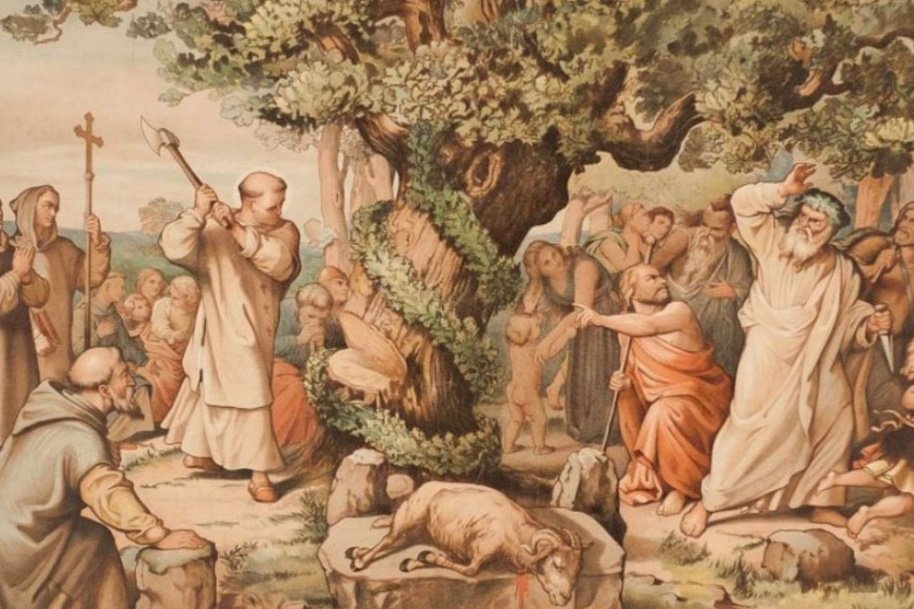
Superstitions have existed throughout human history which is rooted in our innate curiosity and our desire to find meaning in the unknown. They often stem from a lack of understanding or fear of the unfamiliar, leading people to create explanations or rituals to ward off negative outcomes.
Clever and intelligent people know this human tendency towards superstitions and exploit it for their own benefit and plans. They know that by fueling superstitions, they can attract the attention and interest of the masses and effectively shape the direction of society’s thoughts. One of the ways these manipulative minds achieve their goals is by spreading big lies and false beliefs.
They understand that people are naturally drawn to mysterious stories and compelling narratives.
By making up elaborate stories and presenting them as truth, they can capture public curiosity and align it with their agendas.
These smart people know that human curiosity is a powerful force. They know that people are drawn to the unknown and eager to seek and discover mysteries. They can attract society’s attention by introducing themselves as gatekeepers of hidden knowledge or possessors of supernatural abilities.
Superstition manipulation is not a new phenomenon. Throughout history, there have been countless instances of people using superstitions to further their own interests. From religious leaders who claim divine power to political figures who exploit the fears and insecurities of the masses, manipulating superstitions has been a powerful tool in shaping society.
Superstitions have fascinated and enthralled the human mind for centuries. They are ingrained in our cultures and societies and shape our beliefs and actions. But have you ever thought about who benefits from these superstitions? Who are responsible for the clever manipulations behind the scenes that use our innate curiosity and fear to their advantage?
Throughout history, there have been people who have realized the power of superstitions and used them to their advantage. They realized that by promoting these beliefs, they could influence the masses and shape the direction of society’s thoughts.
6.1. Ancient Greek oracles
In ancient Greece, leaders had great power and influence. People flock to these seers and seek guidance and predictions for their future. They manipulated people’s thoughts and actions by cleverly using vague language and vague prophecies.
Using fear of the unknown, oracles maintained their authority and controlled the decisions of individuals and even entire cities. They knew that by keeping the people in a state of constant uncertainty, they could secure their power and influence.

6.2. Witch hunters in the Middle Ages
The Middle Ages were a time of great fear and paranoia, especially around witchcraft. During this era, people who believed they had supernatural powers were often persecuted and executed.
Smart people also pretended to be witch hunters and took advantage of this hysteria. They accused innocent people of practicing witchcraft, using fabricated evidence and exploiting the superstitions of the time. By doing this, they not only gained power and influence, but also diverted attention from their nefarious activities.
6.3. Fortune tellers of the Renaissance period
The Renaissance was a period of great intellectual and artistic growth, but it was also a time when superstition flourished. Fortune tellers and astrologers emerged and claimed to have the ability to predict the future and provide guidance.
These astute manipulators adeptly employed their keen observation and psychological manipulation skills to artfully persuade individuals of their purported abilities. Their shrewd exploitation of people’s inherent yearning for certainty and control not only contributed to their personal gain but also facilitated the accumulation of substantial wealth and influence.
In essence, their overarching goal was to capitalize on the human psyche’s quest for assurance and mastery, thereby establishing a foothold in both material prosperity and societal prominence.
Through a calculated interplay of perception and persuasion, they navigated their way towards the realization of their multifaceted objectives.
6.4. Cult leaders of the modern age
In the modern era, cult leaders have used superstitions to control and manipulate their followers. Through their charismatic personalities and the promise of salvation or enlightenment, these individuals have attracted devoted followers who believe in their supernatural powers.
The ultimate goal of these leaders is to establish a sense of unquestioning loyalty and dependency among their followers, creating a dynamic where the leader’s every command becomes sacrosanct.
This calculated strategy enables them to wield significant influence over the lives and beliefs of their followers, effectively achieving their overarching goal of unquestioned authority and control.
Cult leaders maintain control over the thoughts and actions of their followers by creating rituals, symbols, and superstition-based teachings. They exploit the human tendency to search for meaning and purpose and ultimately benefit from the dedication and resources of their followers.
These clever manipulators throughout history demonstrate the power of superstition and the vulnerability of human nature. By understanding our innate curiosity and fear, they have effectively shaped the direction of society’s thoughts and actions. Jim Jones (People’s Temple), Charles Manson (Manson Family), Marshall Applewhite (Heaven’s Gate), Shoko Asahara (Om Shinrikyo), David Koresh (Branch Davidians) are among the people who during the modern era have been exposed to vulnerabilities, belief systems and People’s fears have been exploited for personal gain.
7. The Impact of Charismatic Personalities in the Contemporary Age
The potency of magnetic figures
In contemporary times, charismatic, well-known, affluent, and eminent figures strongly impact society. They possess the capacity to shape public perceptions and convictions, often leveraging the innate human pursuit for meaning and purpose. One approach they utilize to accomplish this is by fostering superstitions and propagating concepts related to the Illuminati.

People who are aptly colored with charisma are acutely aware of the unparalleled potency that a singular belief can harbor and how profoundly it can shape and direct human lives. They are conscious of the fact that by strategically crafting an alignment of their individual entities with theories, concepts and notions that possess broad appeal, they can gather around them a dedicated and loyal network of followers. This, in turn, serves their personal and professional goals in remarkable ways.
By subtly stringing their ideas and products with these popular hypothetical constructs, they seamlessly tap into the mighty current that is formed by the enthusiastic supporters, as well as the widespread owners of said beliefs. This seemingly indirect but intelligent design of connection enables them to lend additional heft and believability to their ideas. As these theories continue to pull in legions of devotees, those vivid ideas resonating from these personas assume a more credible shape in the eyes of observers.
Moreover, exploiting the momentum of such a trend they effectively stimulate an escalated demand for the goods or services they offer. As the believers and ardent followers align with their vision, there subsists an intensifying call for their varied products. As such the process paints an interesting cyclic narrative. The enhanced credibility fortifies the belief, which then propels higher desire for the products.
The elevated product demand justifies the credibility further, setting up a robust structure where ideas and belief systems are inextricably entwined, painting a symbiotic picture.
In this delicate dance, influence becomes power.
8. The case of Elon Musk
One of the prominent examples of charismatic personality in modern times is Elon Musk. Renowned for his pioneering investments in technology and space research, Musk has engaged the public’s curiosity and amassed a devoted fanbase.
Musk understands the power of conspiracy theories and their appeal to many people. He elements of these theories has cleverly incorporated it into his public persona and has caused intrigue and fascination among his fans. In doing so, he has not only gained a dedicated following, but also generated interest in his ventures, such as Tesla and SpaceX.
For example, Musk’s interest in colonizing Mars is linked to theories of a secret Illuminati plan for a New World Order.
While there is no concrete evidence to support these claims, the association with such theories has fueled speculation and heightened interest in his ambitious space exploration projects.
8.1. Exploitation of human psychology
Charismatic figures like Musk understand the psychology behind belief systems and how they can be exploited for personal gain. They tap into people’s innate desire to find meaning and purpose and give them a sense of belonging and a shared belief system.
By aligning with popular theories and ideas, these characters create a sense of exclusivity and intrigue. They position themselves as gatekeepers of hidden knowledge and invite their followers to join them on a journey to enlightenment and success.
8.2. The business side of charisma
While the influence of charismatic personalities may seem manipulative, it also has a significant impact on businesses. By linking their ideas and products to popular theories and beliefs, these people create a sense of authenticity and credibility. The goal is to establish a deep connection between their offerings and the values and aspirations of their target audience, fostering a sense of trust and loyalty. This strategic alignment with prevailing ideologies becomes a powerful tool in achieving the overarching goal of market influence and consumer allegiance.
“Customers are more likely to trust and invest in products endorsed by charismatic personalities they admire. This phenomenon is often seen in the fashion world, where celebrity endorsements can greatly increase sales and create trends.
The goal is to leverage the influence and appeal of these figures to not only boost the visibility of a product but also align it with the aspirational lifestyles and preferences of the target audience.
Through this strategic association, brands aim to achieve the overarching goal of enhanced market presence, increased sales, and a lasting impact on consumer behavior.”

People with charismatic dispositions are keenly aware of the abundant power they have at their disposal. Notably, these individuals, who are naturally blessed with charm and influencer-like traits, have a firm understanding and recognition of this might. They acknowledge their charismatic ability and manipulate it to obtain an upper hand in different aspects of their lives, be it personal upliftment or professional advancement.
Such charisma-driven individuals identify the potent influence they carry over others, particularly those who hold them in high regard. These followers or admirer, under the magnetic sway of their charisma, often look to them for direction and inspiration. Identified as effective influencers, these charismatic personalities are mindful of this influence and leverage it strategically to advocate and push forth their notions, thoughts, and concepts.
Moreover, this extends beyond mere ideas. Often, charismatic figures also utilize their influential power to endorse and market distinct products or services which they believe bring value. Their charismatic allure is therefore not just limited to molding thoughts but stretches its reach to the familiar business environment. In doing so, these personalities are then seen to indirectly or directly aid in the growth and overall benefit of their professional enterprise or said business.
In sum, the comprehension and effective manipulation of their innate charisma pay dividends for these individuals, positively impacting both their personal status and professional undertakings, and eventuating in achieving the desired growth or progress.
Elon Musk has a unique ability to turn science fiction into reality. From electric cars to space exploration, his ventures have not only disrupted traditional industries, but paved the way for a more sustainable and technologically advanced future.
Elon Musk, known globally for his innovative mind and entrepreneurial acumen, is spearheading one of his most audacious projects yet, aptly dubbed Neom. Embodied by its sheer scale and futuristic design, Neom is a city rooted in the embryonic stages of construction in the windswept deserts of Saudi Arabia, a location renowned for its wealth and potential.
Mapped with finesse and commenced under the intricate supervision of Musk himself, Neom hits a key note in ambitious urban planning and conceptual city development. This project is made a reality with the backing of powerful pillars, including the authoritative Saudi government and a collection of prosperous global investors who share Musk’s vision of the future.
Under Musk’s envisaged plan that rides on the wings of sustainable methods, Neom is projected to rise as a metropolitan phenomenon, one that strides on sustainable environmental game plans and hivelike interconnected technology. Behind this city’s dynamic construction lies Musk’s compelling mission to formulate and mold a sustainably sophisticated and technologically savvy city that promises minimal to zero harm to Mother Nature, coupled with advanced instances of modern living and conveniences.
The sheer dramatic verve of this revealing conception is Musk’s ultimate goal: to have Neom as the paragon — the example that future smart city developments can mirror and learn from. This deliberate concept extends beyond the warm sandy expanses of Earth. Musk’s Neom city has been envisioned and endowed to serve the dramatic course of human development not only on our home planet but in the elusive plenitude of Outer Space as well.
In this light, Musk aims for Neom to be as inviting to Earth-comfortable human inhabitants as it is to potential space societies that may, in future periods unknown yet to us, extend beside us. Either way, in the shifting grounds of Saudi Arabia or the star-blanketed expanses beyond our known atmosphere, Musk’s Neom is charted to innovate urban development and set ablaze new principles for future citizenship sojourns both here on Earth, and further afield, in the cosmic hold of space.
Neom, translating to “new future” in Arabic, is poised to become a hub for innovation and advanced technology. It plans to draw its power predominantly from renewable resources, specifically prioritizing solar and wind power. The city will also feature autonomous transportation systems, advanced robotics, and artificial intelligence-based infrastructure.
The active participation of Elon Musk in the ambitious Project Neom decidedly illuminates his unwavering resolution to have a notable impact on mankind’s future progression. Musk, being the forward-thinker that he is, is driven by the belief that we possess the capability to design cities that are sustainable, brimming with advanced technologies that work hand in hand.
He sees these cities as potential sources of modern, efficient solutions for pressing issues of our time.
These include the looming threat of climate change and the doughnut-like expansion of urban regions, commonly referred to as urban sprawl It is quite evident that Musk’s endeavors are rooted in addressing these issues while pioneering a future generation’s path.
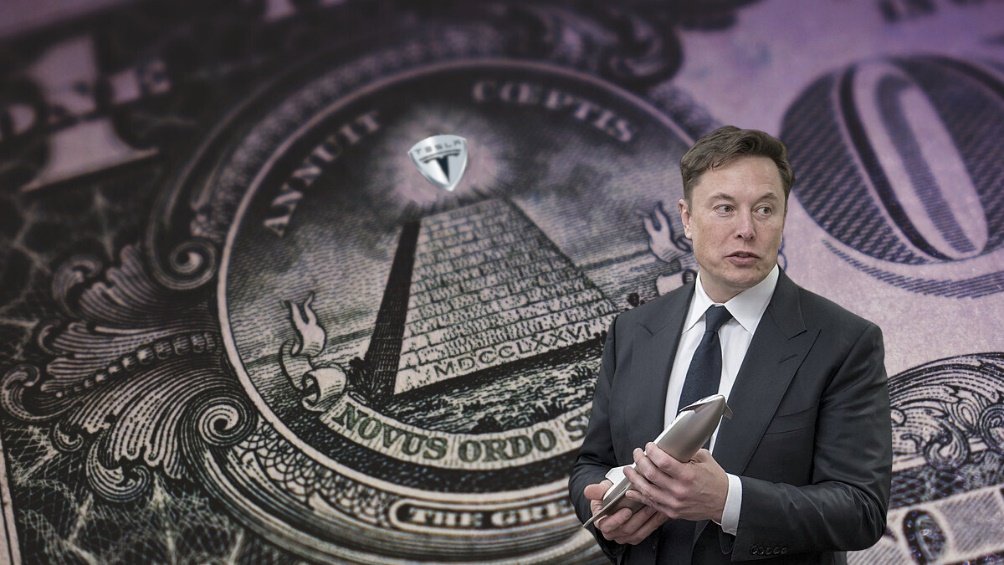
Yet, his vision extends much more far-reaching edges, laying footprints far beyond the horizon of Neom. His very own venture, SpaceX, an American aerospace manufacturer and space transportation company, stands at the forward lines of exploring the unfathomable space.
Over the years, it has time and time again demonstrated great prowess, certainly earning recognition as a front-runner in the modern space race.
Specifically, SpaceX has experienced remarkable success in the launching of reusable rockets – these advancements have substantially succeeded in mitigating the exorbitant expenditures that are inevitably tied to space travel.
But his grand dream does not stop there; it leaps forward, stretching far into space. Embodied in these idiosyncratic aspirations of his, lies the remarkably ambitious intention: colonization – and not just any colonization. Mars colonization. Musk envisions a future where humanity transcends beyond the bounds of living as a single planet species.
He dares to dream of a future where humans become a multi-planetary civilization, venturing and thriving in the vast, alien, cosmos encompassed greater ether beyond our blue planet we call home.
After all, the final frontier may seem a bit less final when approached with such grand, pioneering aspirations shared by the audacious dreamer, Musk.
In addition to SpaceX, Musk is also the co-founder and CEO of Tesla, a front-running company in the electric vehicle and renewable energy industry. Through Tesla, Musk has popularized electric vehicles and accelerated the transition to sustainable transportation. His vision for a clean energy world has inspired other automakers to follow suit.
Additionally, Musk has invested in both Neuralink and The Boring Company. Neuralink is a neuroscience-oriented company, solely committed to crafting brain-machine interfaces that can be implanted. Conversely, The Boring Company is dedicated to revolutionizing transportation by building tunnels underground.
The extraordinary success and unprecedented achievements of Elon Musk can be thoroughly credited to his relentless ambition and iron-clad determination that leave no room for faltering. His characteristic motivational force hardly ever deviates or spirals off course due to setbacks or adversities.
Musk consistently implements a vital aspect to his problem-solving toolkit that isn’t very commonplace, which is his remarkable capacity to think entirely outside the confining parameters of predetermined traditional norms. At fundamental levels, his genius lies in initially questioning conventions and then crumbling them down to the exhaust with an unconventional, radical approach.
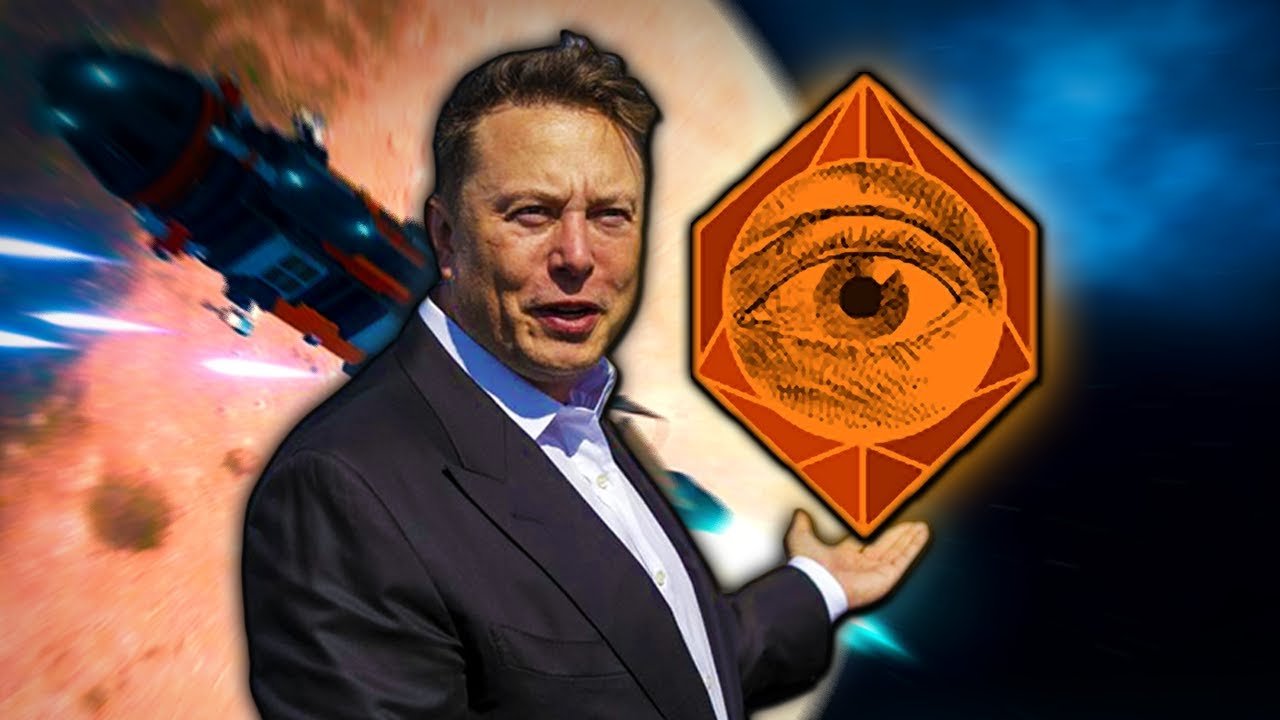
In the vast professional landscape where countless experts and luminaries thrive, Musk owns this enigmatic ability to cherry-pick and enlist the best talent the world has to offer, that can potentially propel his unreachable visions into fulfilling realities. His previously unseen knack for spotting diamonds in rough terrains of talent amalgamates with his charismatic leadership style ensnaring an admirable ensemble of performance-oriented operatives collaborating willingly over time on his astronomical pursuits.
Through his international marquee, the Tesla and SpaceX guru has not just revealed a stunning aptitude for perceiving convoluted issues hitherto unseen or shied away from, but his artistic knack for cultivating transformative, cutting-edge solutions has opened avenues almost futuristic in orientation. His wholesome talent for bridging the vast abyss between perceiving colossal problems and crossing finish lines with innovative fixes has underscored his reputation as a game-changer.
The inherently complicated fields that Musk has plunged into, often donning an undertone of impossibility, have met impressive trailblazing endeavors that redefined the extent of the feasible frameworks with Musk conditions. His clutch televised performances include the radical machinery he built and ushered into century-spanning relevance, starting from electric cars to interstellar tech, sweeping previously insurmountable boundaries of possibility apart he placed the new possibility of colonizing other planets.
Beyond functioning at a displacement factor for his personal endeavors, Elon Musk’s fearlessness in traveling off the plotted course of the probable to push fragility limitations of the impossible has fueled an uprising of fresh and thrusting entrepreneurs. His unwearied vigor, intense passion, and aspirational journey equipped other ambitious, innovative minds with profound inspiration, completely revamping the templates of entrepreneurial measure and acceleration-indicative pace.
Yet it remains that the grand endeavors enthusiastically envisioned and implemented by Elon Musk do operate amidst extensive criticism and skepticism. Detractors vehemently assert that across Musk’s various ambitious initiatives there percolates a well-observed inclination towards setting unattainable targets.
These project goals, they reason, often descend into over-hyped affirmations and subsequently ensure the dismay of delivery despite promising more.
Adding more fuel to the fires of contention, Musk’s fiercely communicative attitudes have experienced a convoluted reception, often eliciting both iPhone-eyed adulation and fierce critique in the ever-buzzing corridors of social media platforms.
Detractors opine that his propensity for engaging forecasts and projections leaves a Route main untagged, forming their basis for the advice-to procedure heavily in embedding their investment arsenals or otherwise. Yet, it is bracing the onslaught of thunderhead of deskilled scrutiny and conjoint praise that uncompromisingly forms a singular beam as far as his futuristic asset portfolios may seem.
In retrospective comfort, it continues to hold truer than many other stronger stories. In agogic social altitude climb, charismatic luminaries continue presenting a blazing trails, possessing profound droit towards purchase-selling keystones social pulse speed knobs of easy-sum-add calculations or social extraverts.
The goal here is to intricately weave a narrative that seamlessly integrates the charisma of influential figures with the dynamics of social engagement.
Through this deliberate fusion, the aim is to achieve multifaceted goals, ranging from increased social connectivity to the facilitation of purchase-selling transactions, all guided by the charismatic influence of these luminaries.
The text appears to be a cryptic and abstract description of a process or activity involving the use of usernames, symbols, and belief systems. It suggests a journey or quest for understanding and direction, with references to heroic arcs and navigation. The use of symbolic and technical language adds complexity to the text, and it may pertain to themes of identity and belief.
He has fascinated individuals worldwide.Elon Musk is a true visionary and pioneer of the modern age. He has demonstrated the power of imagination and innovation through his revolutionary projects. Whether through electric cars, space exploration, or sustainable cities, Musk continues to push the boundaries of the impossible and shape the future of humanity. Elon Musk Behesht (We write Behesht, you read projects and innovations The new) sells to the rich! Including the Neom project with the investment of the rich and the Saudi government!
Yes, Ilan Mask is a prophet in the modern era who appeared from the earth instead of the sky!

